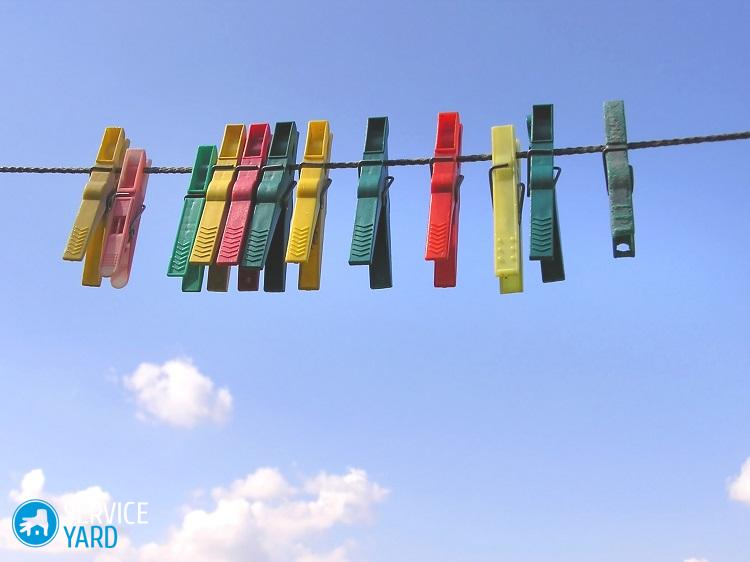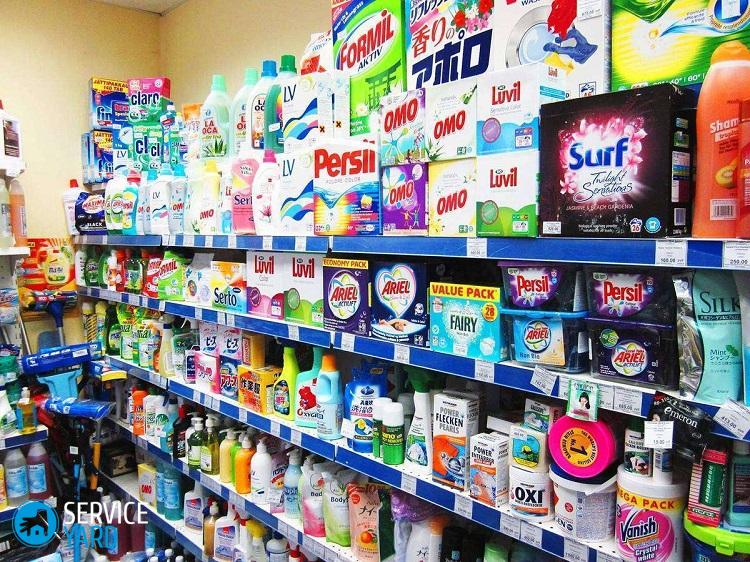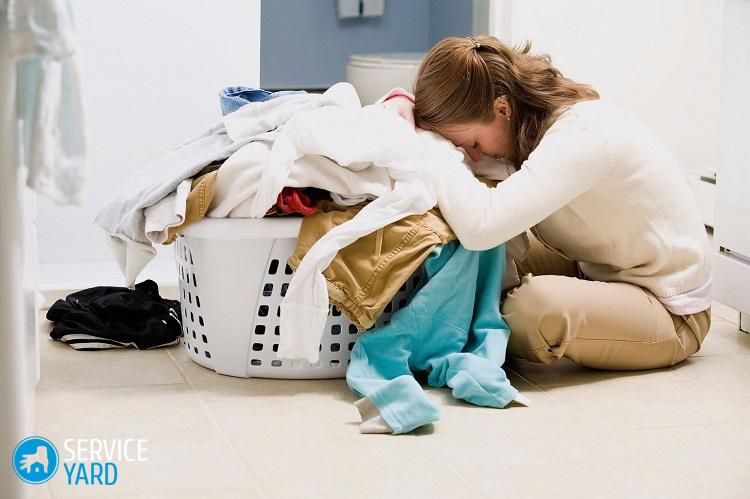How to wash clothes from different fabrics?

The wardrobe of every modern person includes things from different materials. In order to understand how to wash clothes from different fabrics, you need to have an idea of how these fabrics differ from each other and whether they can be combined when washing. In this article we will consider the basic principles of caring for different types of textiles and help you choose the right detergent.
to contents ↑Why do I need a special approach to washing?
The fabric consists of fibers of animal, vegetable or artificial origin. The most common are wool, silk, linen, cotton, viscosepolyamide. Fibers of different origins require a different approach to washing. And these are not only special detergents, but also a suitable mode, water temperature. Accordingly - before loading the laundry into the drum of the machine, it must be sorted:
- First, separate children's things from adults.
Important! This must be done for reasons of hygiene. For the same reasons, wash your bedding separately.
- Also, do not wash along with other things new, only purchased. This way you protect your laundry from molting.
Important! For the first time, new clothes should be washed separately by hand, because the remainder of the excess dye from the fabric may stand out, and this will lead to the rest of the clothes becoming colored.
- Further sorting of clothes is performed as follows:
- Separate the white.
- Separate the dark and light.
- Separate wool, silk, sportswear from membrane fabric.
- We select delicate things from the total mass.
- We divide things according to the temperature regime (those that are washed in warm water, and those that can be subjected to higher temperatures).
- There are such fabrics and wardrobe items that need to be washed only by hand or given to dry cleaners. For example, natural silk, thin knitted blouses and dresses, plush and velvet, wardrobe items embroidered with stones, rhinestones, sequins, decorated with expensive hand embroidery, lace, real fur and leather. Such products must be washed separately, strictly following the manufacturer's recommendations.
Soaking and pre-treatment of stains
Once you have sorted things, proceed to the next stage. Separate the laundry that requires soaking to properly wash clothes from different fabrics.
Important! Usually pre-soaked bed linen, kitchen towels and tablecloths, very dirty clothes. Thus, you will improve the quality of subsequent washing.
Basic rules for soaking:
- Soak things in water with a temperature of about 40 degrees with a small amount of detergent.
Important! Try not to exceed the temperature of the water, otherwise - organic pollution can enter the material even more.
- It is recommended to soak kitchen towels in water with the addition of table vinegar. It will remove the unpleasant odor.
- If towels are in fat, it is advisable to add instead of powder dishwashing liquid, or just wet towels thoroughly rub with laundry soap and leave for an hour, then rinse and wash.
Important! If you want to save your time and energy, take a look at the settings of your machine. Perhaps it has suitable options. In a separate article we talked in detail about prewash and soak mode.
Stain treatment
Also, washing clothes from different fabrics involves the processing of stains. No matter how advertisements paint the “magic” of detergent, stains after washing may still remain.
A universal remedy that copes with most of the dirt is a store stain remover - it can be for white and for colored linen. Stain removers come in powder form, in liquid form and solid (“pencil”, whetstone). To choose the best, browse our stain remover rating.
to contents ↑Important! If you don’t have a stain remover on hand, then you can use folk remedies, which in most cases consist of available funds located literally in every house: soda, salt, vinegar, ammonia, acetylsalicylic acid, alcohol. For each type of stain (from wine, felt-tip pen, tea, paint, blood), there are at least three recipes for its removal at home. See them in our separate publication. "Removing stains".
Washing clothes from different fabrics
After you sort the laundry, proceed directly to the wash. Modern washing machines are equipped with programs for almost every type of fabric. Smart technology, in accordance with the selected mode, will itself select the water temperature, washing duration, spin intensity. You don’t even have to think about anything, because why did we sort the clothes? What does not harm cotton is completely contraindicated in wool or delicate fabrics. For example, white bedding, tablecloths and cotton towels can be washed at 95 degrees, but other things can suffer from high temperature (shedding, sitting down, deforming, and so on).
We analyze the washing of different types of fabric separately.
Important! Before the first wash, be sure to read the manufacturer's recommendations on the tag (washing, drying, using bleach). To understand all the notation you will help our decoding of characters on clothes.
Cotton
Cotton is a natural fabric. It is eco-friendly and pleasant to wear. When washing it, you must consider the following:
- White items (home textiles) can be washed at high temperatures with a special powder for white and even boiled. If you can set aside time for digestion, keep a special a selection of effective recipes for boiling clothes.
Important! Be careful with clothes - they can sit down. Machine drying may also cause shrinkage of the cotton fabric.
- Optimum temperature for not soiled cotton linen, including color, 45 degrees.
- To wash colored laundry, use a colored detergent to maintain the brightness of the fabric.
- Cotton can be washed easily in quick wash mode, but it is recommended to rinse better.
- If the fabric has a noble lace trim, the thing should not be twisted. Such a fabric can be easily bleached both with folk remedies and with store ones.
Important! It should be noted that bleaches with chlorine do their job better and faster, but cotton fibers wear out faster. Oxygen bleaches not only eliminate stains, but also preserve the structure of the fibers. And there are optical ones that only visually give things shine and crystal whiteness. If you want to understand all the features of funds of different brands, we recommend reading our separate publication "Bleaches for clothes".
Linen
This fabric is not very popular, as it requires careful and constant ironing, but it is indispensable in the heat. Linen clothes and linen are especially popular in summer. Dear tablecloths, napkins are also sewn from linen. By the way, you can easily make such household items with your own hands. To do this, click on the link and follow the step-by-step instructions of the master classes, how to sew a tablecloth. It absorbs moisture well, does not get dirty much and dries quickly.
How to wash linen clothes:
- Flax, like cotton, can shrink at high temperatures, so it is advisable to wash clothes at a temperature of 30-40 degrees.
- You can wash it manually or in delicate mode.
Important! If you do not squeeze flax strongly, then it will be easier for you to iron it. But it will simplify the task of spreading the fabric information from the article "How to iron flax?".
- When washing white flax, use chlorine-free detergents, optimally in liquid form, then they will be better rinsed.
- When stains are removed, only oxygen bleach is suitable.
- Colored flax is recommended to be washed in warm salted water.
Silk
Natural silk is quite rare. Dresses, blouses, scarves from natural silk fabric are not cheap, so you need to be especially careful with them:
- It is recommended to wash such things manually (although there are washing machines with the “silk” mode) with a special liquid detergent composition.
- Water should be barely warm, as silk can fade.
- You can’t rub it strongly with your hands, otherwise, the fibers will disperse, gaps will be visible on the fabric.
- After washing, the silk should be thoroughly rinsed in water with the addition of vinegar and hung to drain.
Important! It is impossible to twist silk fabric.
- Drying away from the battery and sunlight.
Wool
Wool is also washed separately from the rest of the laundry, as it requires an individual approach. It retains heat well and is not very dirty and wrinkled.
Wash Rules:
- It is recommended to wash wool products manually in warm water (about 35 degrees) with the addition of a special detergent for wool (if it was not at hand, you can even use shampoo).
Important! In modern models, washing machines usually have a program for washing wool.
- When rinsing, you can add wine vinegar or conditioner to soften the coat.
- Also, to soften the woolen thing, you can pour 1 teaspoon of glycerin into the water for the last rinse.
- It is better to remove stains with vinegar, bleach can not be used.
- It is impossible to twist such products, you can get rid of excess moisture by wrapping the thing in a terry towel.
- Dry the wool in a horizontal position. Knitted hats for drying stuffed with white paper, giving it the desired shape.
Important! If the wool product is expensive and of high quality, take it better to dry clean.
Knitwear
Knitwear is very prone to stretching, and the elasticity of the threads can be damaged by too high a washing temperature and intense spin. Therefore:
- When washing, follow the desired mode - the water temperature is 35-40 degrees, the spin is delicate.
- Detergents should be mild and rinse thorough.
- If the thing is thin, do not squeeze either manually or in the typewriter at all. Better let the water drain a little and then wrap it in a sheet or towel and get it wet.
- Dry horizontally.
Important! Before washing in clothes, you can gently thread the neck and bottom of the product so that they do not stretch. The thread should be removed only after complete drying.
Synthetics
Synthetic fabrics (especially with elastane) do not tolerate hot water. White and light things can turn yellow, colored things can lose their brightness, fabric fibers can be deformed. Therefore:
- Synthetics should be washed in warm water (30-40 degrees) with mild detergents.
- During hand washing, do not rub it heavily with your hands (especially acetate), actively twist the product.
- If the item is very dirty, you can pre-soak it, but not for long.
- When washing in a typewriter, select the "Synthetics", "Delicate" mode, then during the process the water will be moderately warm and the extraction will be moderate.
Important! Of all types of synthetics, the most unpretentious polyester.
- If the product contains acrylic (artificial wool), it is recommended to add a softener at the last stage of washing, then less spools will form.
Important! During rinsing, it is advisable to add antistaticbecause synthetic products are highly electrified, especially during the heating season, when the air is dry.
Membrane tissue
These fabrics do not really like washing, as the breathable and water-repellent properties may be lost:
- If there are small spots, they can be rubbed with a soft, damp sponge.
- If a thing is specifically contaminated, then it is better to take it to dry cleaning.
- If you decide to clean it yourself, you need to wash it in warm water, quickly and with a special washing gel for sportswear.
- Soak, use detergent, stain removers, add conditioners and rinse aid when rinsing. Also, clothes from membrane fabric cannot be twisted. Water should drain itself.
to contents ↑Important! After washing, there is certainly no less, and sometimes more laborious, ironing process. But not always. Find out about what fabrics do not need to be ironed.
How to wash clothes from different fabrics?
Detergents in the form of release are divided into powders and liquid products. We will figure out how to wash clothes from different fabrics.
Powders
Powders more efficiently wash dirt, but worse washed out of the fibers. They are divided into:
- universal (suitable for washing different types of fabric);
- for white linen;
- for color;
- for baby underwear.
Liquid
Liquid products may be in the form of gels or capsules with a gel inside. They rinse out better, but cope with pollution a little worse (the concentration of active substances in them is lower).
Important! Special products for specific types of tissue are most often produced in liquid form.
Laundry liquids can be intended:
- for black;
- for silk, wool, delicate fabrics, sportswear.
to contents ↑Important! Also, at the last stage of washing, rinsing agents and conditioners are added, which are designed to soften fabrics, give them aroma and reduce static electricity.
Useful tips for washing different types of fabrics:
- To keep the brightness of flowers longer in a new colorful thing, fix them with salt and vinegar. First soak the product in saline (1 tablespoon per 1 liter of water) for an hour, then for half an hour in water with vinegar (3 tablespoons per 10 liters of water).
Important! The same method is quite effective for washing molting clothes and home textiles.
- Soaking in brine will help refresh the color of blue, black, and blue things.
- Soak the color of brown products soak in tea leaves for 10 minutes.
- The elasticity of woolly things will return the addition of alcohol to the water for washing.
- Thermal underwear it is advisable to gently wash by hand with mild liquid products at a temperature not exceeding 40 degrees. Do not use substances with chlorine. Rinse the thermal underwear well without adding any conditioners or other additives.
- When washing a down jacket, do not soak it beforehand. Just rub a particularly dirty area with a soft brush. First unfasten the fur and zip up the zippers. Wash in “delicate wash”, Putting 3-5 tennis balls into the drum. It is advisable to use a liquid detergent, and in order to avoid soap stains, an additional rinse is required. While the jacket is drying, shake it periodically in different directions.
- In order for the terry products to remain fluffy after washing, rinse them in salted water.
Stock footage
The secrets of washing clothes from different types of fabric are many. The article outlines only the simplest and most useful of them. Do not ignore the composition of the material, read the labels carefully, because only in this way you will know the possible prohibitions regarding caring for your favorite thing. Useful recommendations from the material presented will help you maintain the color and beautiful appearance of clothing and home textiles for a long time.
- Dishwashing liquid
- Prewash - what is it?
- Stain removers for clothes
- How to remove stain 🥝 how to remove old stain
- Clothing Care Symbols
- Laundry bleach
- How to boil linen at home?
- Do-it-yourself tablecloth
- Delicate washing in the washing machine 🥝 gentle gentle
- Linen things 🥝 how to iron a shirt, dress, pants
- What fabrics do not need to be ironed?





























